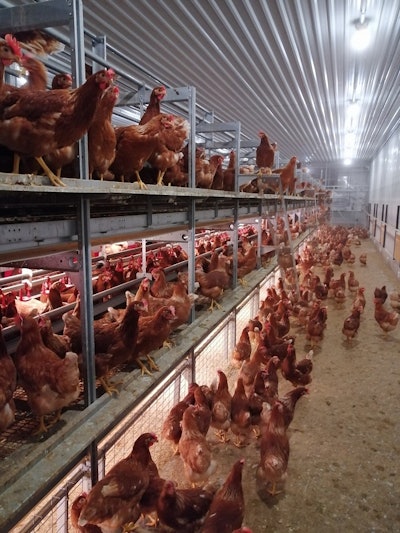
One of the ways the egg sector can help to reduce its environmental impact is through bridging the gap and raising the productivity of poorer performing producers towards the productivity levels of more efficient producers.
For a number of years, the Food and Agriculture Organization (FAO) has promoted the "bridging the gap" concept not only in terms of gender equality, which is highly needed in agriculture, but also in terms of productivity. It is one of the main streams of actions of the Global Agenda for Sustainable Livestock, a partnership of livestock sector stakeholders, committed to the sector’s sustainable development.
A survey of production data from 38 countries conducted on behalf of the FAO a few years ago revealed significant variability in the number of eggs produced between countries having the same production cycle length.
For example, across four countries reporting a cycle of 60 weeks, there was a 28% difference in the number of eggs produced between the lowest and highest result. Ideally, for the same length of egg production, we should ensure that variability is as low as possible, or in other words, obtaining as many eggs as the best performing country.
This variability is also evident at the national level when looking at mortality reported in Life Cycle Analysis studies. For instance, the annual mortality rate in layers in these studies ranged from 1.2% to 8.4% in the U.S. and from 0.9% to 7.3% in Canada. For every percentage reduction of mortality , emissions of greenhouse gases are reduced by approximately 1-2%. Reducing mortality in flocks not only improves the profitability of egg production but reduces its impact on the environment.
Productivity variations also exist also within a company between different sites, and good management is one of the key success factors for egg production. By bridging the gap and seeking to raise our productivity to that of the best egg producers and farms, we will achieve a true win-win situation for the egg producers, the consumers and for the planet.
The need to act
By 2050, the combined effect of the growth in the global population to 9.7 billion people and the welcomed rising level of income in many less fortunate countries will result in a 70% increase of demand for animal protein.
In 2012, the FAO estimated that the livestock and poultry sector contributed 7.1 giga-tonnes of CO2 equivalent per year - or about 14.5% of the total of greenhouses gas emissions. By 2030, the animal production sector may increase its contribution to 8.37 giga-tonnes, an increase of 18%, if no real changes are implemented across sectors.
Although the egg sector currently contributes a very small portion of these emissions - 2.8% of the total - a few new trends and regulations, such as cage-free production or raising male layer chicks for meat production - will cause the egg sector to increase its environmental impact.
The egg sector needs to urgently take action, but we are fortunate that the proverbial, low-hanging fruit is plentiful.

















